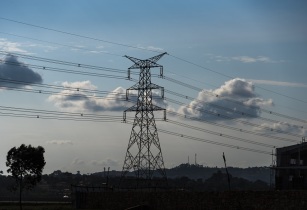Power investments in the Middle East and North Africa region for 2021-25 remain largely unaffected, as per APICORP?s MENA Energy Investment Outlook 2021-2025
Notably, the sector?s total investment amount of US$250bn is the highest of all energy sectors ? with an estimated US$93bn and US$157bn in committed and planned projects, respectively, over the next five years.
With a share of around 40%, renewables form a significant part of those investments as countries push ahead with their energy diversification agendas. In the GCC, Saudi Arabia?s Renewable Energy Project Development Office and Public Investment Fund projects continue to progress. North African countries are also showing measurable development in the renewables realm, with Algeria establishing an independent authority to oversee the development of the country?s strong pipeline of projects, and Egypt working to resolve regulatory issues related to its wheeling scheme and the unbundling of its power market.
This shift to renewables is a chief factor behind the rising share of investments in transmission and distribution (T&D) in the power sector value chain, as the integration of renewables into power grids requires significant investments to enhance and digitise grid connectivity, not to mention storage to accommodate the surplus power capacity they generate.
Renewables investments
As a whole, the MENA region expects to add an estimated 3GW of solar power in 2021 ? doubling its total from 2020 ? and almost 20GW by 2025. Wind and other sources such as hydropower are also coming into their own as countries step up their energy diversification plans.
Jordan, for example, managed to increase the percentage of power generated from renewables from just 1% in 2012 to around 20%. Morocco?s 4GW of renewables (wind, solar and hydro) constitute around 37% of the country?s total generation mix and almost 90% of its current 3.5GW project pipeline. Egypt?s total installed renewables capacity amounts to around 2.3GW, including 1GW of solar PV and 1.3 GW of onshore wind.
In the UAE, renewables constituted around 6% of the total installed capacity and 3% of the power generated as of 2020. Although it may just miss its short-term targets, the UAE?s solar capacity is projected to grow the fastest in the region with nearly 5GW of solar projects in the pipeline.
In Saudi Arabia, only 330MW of utility-scale solar PV projects and just one 2.5MW wind demonstration project developed jointly by Saudi Aramco and General Electric were operational as of 2020. Even when combined with the tenders under its National Renewable Energy Program, the total renewables capacity of the Kingdom totals 3.3GW, around 24GW short of its stated target of 27.3GW by 2024.
Despite ongoing procurement of large-scale utility projects, Oman is also far from achieving its short-term target of generating 10% of its power from renewables by 2025, with a single 105MW utility solar PV project and a 50MW onshore wind project commissioned over the past 2 years.
As for Iraq, the first solar bid round for projects totalling 755MW capacity was announced in May 2019 and bids of short-listed companies were disclosed in September the following year. Overall, the country aims to reach 10GW of solar power generation capacity by 2030 and generate 20% of its power from solar.
Developing energy storage is key
The expanding share of renewables, growth in power demand, and balancing supply and demand on a real-time basis necessitates the integration of modern, digitised energy storage solutions. Despite its significant potential in this area, the MENA region suffers from the limited role of storage in networks. To overcome this, regulations will need to evolve to reflect energy storage?s current functions, including leveraging flexibility from consumer aggregation or grid congestion.
The hydrogen and ammonia race
MENA is also a strong candidate for becoming a major hydrogen-exporting region thanks to its combination of low-cost gas resources and renewable energy. A few countries, such as Saudi Arabia and Morocco, have already made headways as low-cost exporters of blue and green hydrogen, net-zero ammonia and other low-carbon products, while other countries, such as Oman, UAE, and Egypt are attempting to catch up.






